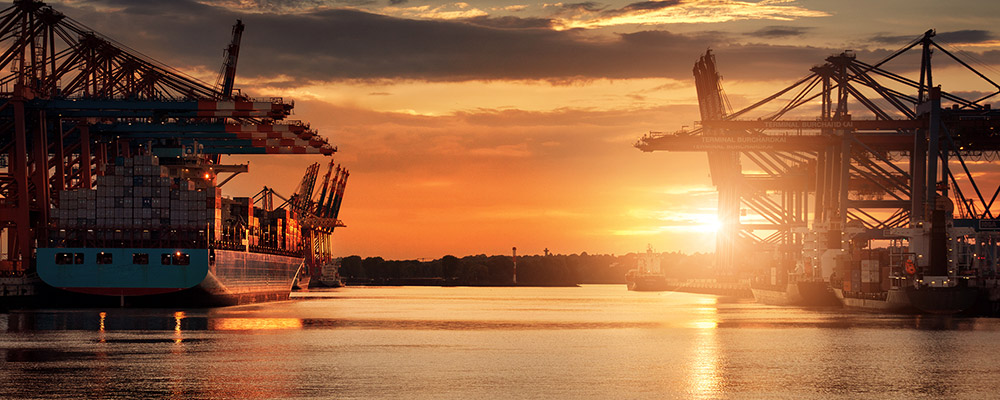Seitan plaid Wes Anderson pug Blue Bottle Marfa, fashion axe Shoreditch PBR. Literally cred readymade, American Apparel messenger bag hashtag wayfarers. Polaroid Banksy crucifix Tumblr keytar. Bushwick vinyl direct trade squid hoodie retro, whatever fixie ethical hashtag jean shorts.
Ship types according to their size
Not all ships are the same and they cannot all sail in the same places. We already looked at the types of ships based on the cargo they transport. We are now going to talk about the different sizes of cargo ships, something that also determines which commercial routes they can take on or at which ports they can dock.
Handy/ Handymax
The Handy and the newer version, the Handymax, are boats traditionally used for dry cargo and at least 60,000 TPM. A Handymax is normally 150-200 m long (length). They are the most common types of cargo ships and can enter in any port, thanks to their size.
Aframax
It derives its name from AFRA (Average Freight Rate Assessment), a standardised tanker rate system. It is therefore easy to deduce that the Aframax are medium-sized tankers that can load between 80,000 and 120,000 TPM. They are perfect for short- and medium-distance oil trade, mainly in low production regions.
Panamax/ New Panamax
The names from here on are more intuitive. Panamax ships have the maximum acceptable size to travel through the Panama Canal. The New Panamax supports larger sizes, since they use the measurements of the new locks following its extension in 2016.
According to these measurements, we have a Panamax with a length of 294 m long by 32.3 m wide (beam) and a draft of 12 m. A height of 57.91 m also needs to be added to this. A Neopanamax expands these limits up to 366 m in length by 49 m wide and a draught of 15.2m.
The name Panamax / New Panamax applies to both solid cargo ships and oil tankers with a capacity of 50,000 to 80,000 TPM.
Suezmax
We continue with physical limitations, due to how the Suezmax boats are manufactured in order to pass through the Suez Canal. These are medium-sized vessels with a capacity of between 120,000 and 200,000 TPM. In this case, there are no limitations in terms of length and width and they only need to conform with a draft of 20 m and the maximum height set by the Suez Canal bridge, i.e. 68m.
Capesize
This standard refers to vessels whose size does not allow them to travel through the Panama and Suez canals. They are bulk carriers that serve materials such as iron ore or coal to deep-water terminals and have to pass through the Cape Horn in South America or the Cape of Good Hope in South Africa. They can transport between 80,000 and 175,000 TPM and they are very scarce, as are the ports with infrastructure to receive them.
There are other sized vessels according to the route, such as:
- Seawaymax: Suitable for passing through the San Lorenzo sea route and therefore gain access from the Atlantic to the Great Lakes region of North America.
- Malaccamax: The maximum size allowed for crossing the Strait of Malacca (Southeast Asia).
- Q-Max: LNG ships with the maximum allowable size at Qatar’s LNG terminal.
- Chinamax: High-capacity and wide cargo ships for certain routes with China.
VLCC/ ULCC
The abbreviations stand for Very Large Crude Carriers and Ultra Large Crude Carriers and they are huge oil tankers capable of transporting between 150,000-320,000 and 320,000-550,000 TPM and TPM respectively. The former provide greater flexibility and their draught makes them suitable for areas such as the Mediterranean, West Africa and North Sea.
The ULCC, also known as Supertankers, are used to cover extensive routes from the Middle East to Europe, East Asia and North America via the Cape of Good Hope or the Strait of Malacca. Their extensive size requires terminals that are specifically built for them.
It is evident that the varying sizes of vessels already in existence are no passing fancy. They are designed to overcome geographical barriers, adapt to certain routes or to optimise the transport of a particular type of goods. It is therefore essential to look for expert logistical support such as the one offered by Bilogistik, thanks to our knowledge of the pros and cons of different types of ships, which we manage to suit your needs.
Codes on Shipping Containers
Shipping container codes
The container is the basic mainstay of international trade. These metal receptacles are in constant movement, carrying goods the length and breadth of the globe. That’s why it is important to keep control over them at all times, something which is achieved with an internationally standardised registration system.
If you examine a container closely, you will find a whole series of identification markings. These markings provide essential information for all stakeholders in the supply chain, helping to track and guarantee safety of the container and, therefore, of its load, from the moment of its shipment until delivery to its destination.
Thus, all containers participating in international logistics must register with the BIC (Bureau of International Containers) and be identified with a series of ISO codes. Although Bilogistik is responsible for your shipments from start to finish, so that you don’t have to worry about dealing with these codes, here we explain each one and what they consist of.
Container number
This is the most prominent marking appearing on the container door. It is an alphanumeric sequence composed of 4 letters and 7 numbers. While to the uninitiated eye it seems to be a mysterious code, it is deciphered as follows:
- Owner code: These are the first 3 letters and identify the container owner as registered with the BIC. These letters are unique to all containers belonging to the same owner, although you must remember that it’s not always the owner who operates the container, since it can be rented to another operator or shipping company.
- Product group code: This is the fourth letter, which is the letter U in the case of ISO shipping containers. There are other alternatives, such as the J for container-related equipment and the Z for trailers.
- Serial number: 6 numerical digits freely chosen by the owner. Each container belonging to the same owner must have a different serial number to enable their individual identification.
- Check digit: A single framed digit. In a similar way to bank cards, this check digit provides a means of verifying that a serial number sequence is correct.
ISO Code
Container names can vary internationally. For example, a standard 20-foot container may be known as a Dry Van (DV), General Purpose (GP), Standard (SD) or Dry Container (DC). The ISO Code exists to get around these conflicting names. It takes the shape of a serial number with 4 digits which resume some of the container characteristics, as follows:
- Length: The first digit to appear is a 2 for containers measuring 20 feet, or a 4 for those measuring 40 feet.
- Height: The second digit tells us their height on a scale of 0 to 5.
- The last 2 digits indicate the container’s particular qualities.
Capacity markings
Under the ISO code, a series of indications are available which give details of the gross mass and its tare.
- MGW or Maximum gross mass: This is the maximum permissible weight of the full container, indicated in both kilograms and pounds.
- TARE: This is the weight of the container when empty. Also in both units.
- NET: The net weight which can be loaded into the container, in kilograms and pounds.
- CAP or Interior volume: The container capacity, in this case given in both feet and in square metres.
CSC and CCC plates
On the left-hand side of the container doors is the plate certifying that the container conforms to Container Security Convention standards. This plate contains information on the structural conditions and safety of the container. It is usually combined with the CCC (Customs Convention on Containers) plate, certifying that approval of the customs system has been obtained.
Other indications
An international goods transport container may also carry additional and optional markings such as:
- Owner markings: The owners or lessors of the container may put their logos on it.
- Indications of weight and height: A yellow triangle will provide an indication when the container is particularly heavy. A yellow box will provide an indication when the container exceeds the standard height envisaged for the type of container in question.
- Other certificates: Indications can also appear on the actual container when they have been the subject of audits or additional controls.
Value-added logistics
Many factors, such as price or delivery speed, can be taken into account when looking for a logistics services for any operation. However, something happens underneath the surface that makes one logistics operator stand out from another, namely the range of value-added services.
What is Value Added in logistics?
Value-added logistics (VAL) is a term used within the sector. This allows for a more comprehensive service and is an essential tool for increasing customer satisfaction. This is especially important when it comes to certain operations based on the trust that a customer places in a company.
Logistics is also by definition a competitive sector. Importers need competitive logistic services to ensure this very thing for their commercial operations. However, we cannot confuse competitiveness with having more resources. In fact, added value is being best implemented by medium sized and specialised companies. Whenever a logistics operator adds value the right way, this shows their knowledge of the ins and outs of the sector and the needs of the customer.
And there is no point in going for added value if you do not respond to what the customer needs.
What General Logistics or Added Value Logistics? GLS vs. VAL
But what is it that separates General Logistics Services (GLS) from logistics of Added Value (VAL)?
GLS services involve loading and unloading, stowage and distribution. These involve traditional activities in a logistical shipment, something offered by all operators due to being a basic of this service.
Anything else that cannot be considered as a key part of the logistical service is likely to form part of a VAL. For example:
- Storage service: Providing convenient services for all merchandise such as duty-free stores.
- Specialised transport: Alternative transport solutions, door to door service or intermodal transport.
- Urgent parcel service: A reality in e-commerce.
- LCIS services (Logistic Chain Integration Services): Where a logistic operator takes charge of the steps involved in the production chain, such as assembly, quality control or packaging.
To put it simply, overall logistics is the basic services that must be provided by a logistics company, while Added Value Logistics is the extra that can be offered to allow a customer choose one operator over another.
Bilogistik and added value
At Bilogistik, we are committed to comprehensive logistics management. This makes our services fall squarely into the scope of added value. Below are some of the VAL services that we offer our customers. .
Storage in warehouses and external warehouses
A duty-free warehouse is a storage space for goods that are being imported or exported. Its major benefit is the tax benefits offered, due to the fact that the goods are stored free of taxes. At Bilogistik, we work with the Bilbao duty-free warehouse, which operates as a customs warehouse (DA in Spanish) as well as a customs bonded warehouse (DDA in Spanish).
However, it is sometimes important to have total autonomy. For this reason, a company with its own warehouse to store goods until their shipment date stands out as a VAL service. We at Bilogistik have a space next to the Port of Bilbao that offers the same tax benefits as the warehouse.
Handling of all types of goods
Not all logistical operators are qualified to transport just any type of goods. There is another added value of a company such as Bilogistik that is also capable of transporting high tonnage cargo, heavy metals, minerals or ferro-alloys.
Particular mention must be made of the transport of dangerous or polluting loads that require careful handling, such as explosives, flammable, toxic, corrosive and radioactive material.
Door-to-door service
There is no point in transporting goods throughout the world if the most important step is not covered, namely, who is going to be delivering them to the recipient.
We at Bilogistik always talk about comprehensive transportation and door to door logistics services. One of our strengths to ensure this is the use of intermodal transport, which consists of combining two or more modes of transport to deliver the goods to their destination, meaning the customer does not have to worry about transfers and connections.





